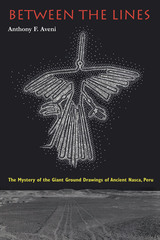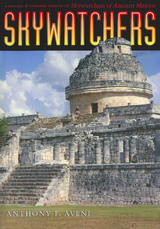

The Nasca Lines are one of the world's great enigmas. Who etched the more than 1,000 animal, human, and geometric figures that cover 400 square miles of barren pampa in southern Peru? How did the makers create lifelike images of monkeys, birds, and spiders without an aerial vantage point from which to view these giant figures that stretch across thousands of square yards? Most puzzling of all, why did the ancient Nasca lay out these lines and images in the desert? These are the questions that pioneering archaeoastronomer Anthony Aveni seeks to answer in this book.
Writing for a wide public audience, Aveni begins by establishing the Nasca Lines as a true wonder of the ancient world. He describes how viewers across the centuries have tried to interpret the lines and debunks the wilder theories. Then he vividly recounts his own years of exploration at Nasca in collaboration with other investigators and the discoveries that have answered many of the riddles about who made the Nasca Lines, when, and for what purposes. This fascinating overview of what the leading expert and his colleagues currently understand about the lines is required reading for everyone intrigued by ancient mysteries.

Westerners think of time as a measure of duration, a metric quantity that is continuous, homogeneous, unchangeable, and never ending—a reality that lies outside of human existence. How did the people of Mesoamerica and the Andes, isolated as they were from the rest of the world, conceive of their histories? How and why did they time their rituals? What knowledge can we acquire about their time from studying the material record they have left behind?
This volume brings together specialists in anthropology, archaeology, art history, astronomy, and the history of science to contemplate concrete and abstract temporal concepts gleaned from the Central Mexicans, Mayans, and Andeans. Contributors first address how people reckon and register time; they compare the western linear, progressive way of knowing time with the largely cyclic notions of temporality derived from the Americas, and they dissect, explain, and explore the origins of the complex dynastic and ritual calendars of the Maya, Inca, and Aztecs. They subsequently consider how people sense time and its moral dimensions. Time becomes an inescapable feature of the process of perception, an entity that occupies a succession of moments rather than the knife-edge present ingrained in our Western minds.

Skywatchers of Ancient Mexico helped establish the field of archaeoastronomy, and it remains the standard introduction to this subject. Combining basic astronomy with archaeological and ethnological data, it presented a readable and entertaining synthesis of all that was known of ancient astronomy in the western hemisphere as of 1980.
In this revised edition, Anthony Aveni draws on his own and others' discoveries of the past twenty years to bring the Skywatchers story up to the present. He offers new data and interpretations in many areas, including:
- The study of Mesoamerican time and calendrical systems and their unprecedented continuity in contemporary Mesoamerican culture
- The connections between Precolumbian religion, astrology, and scientific, quantitative astronomy
- The relationship between Highland Mexico and the world of the Maya and the state of Pan-American scientific practices
- The use of personal computer software for computing astronomical data
With this updated information, Skywatchers will serve a new generation of general and scholarly readers and will be useful in courses on archaeoastronomy, astronomy, history of astronomy, history of science, anthropology, archaeology, and world religions.
READERS
Browse our collection.
PUBLISHERS
See BiblioVault's publisher services.
STUDENT SERVICES
Files for college accessibility offices.
UChicago Accessibility Resources
home | accessibility | search | about | contact us
BiblioVault ® 2001 - 2024
The University of Chicago Press









